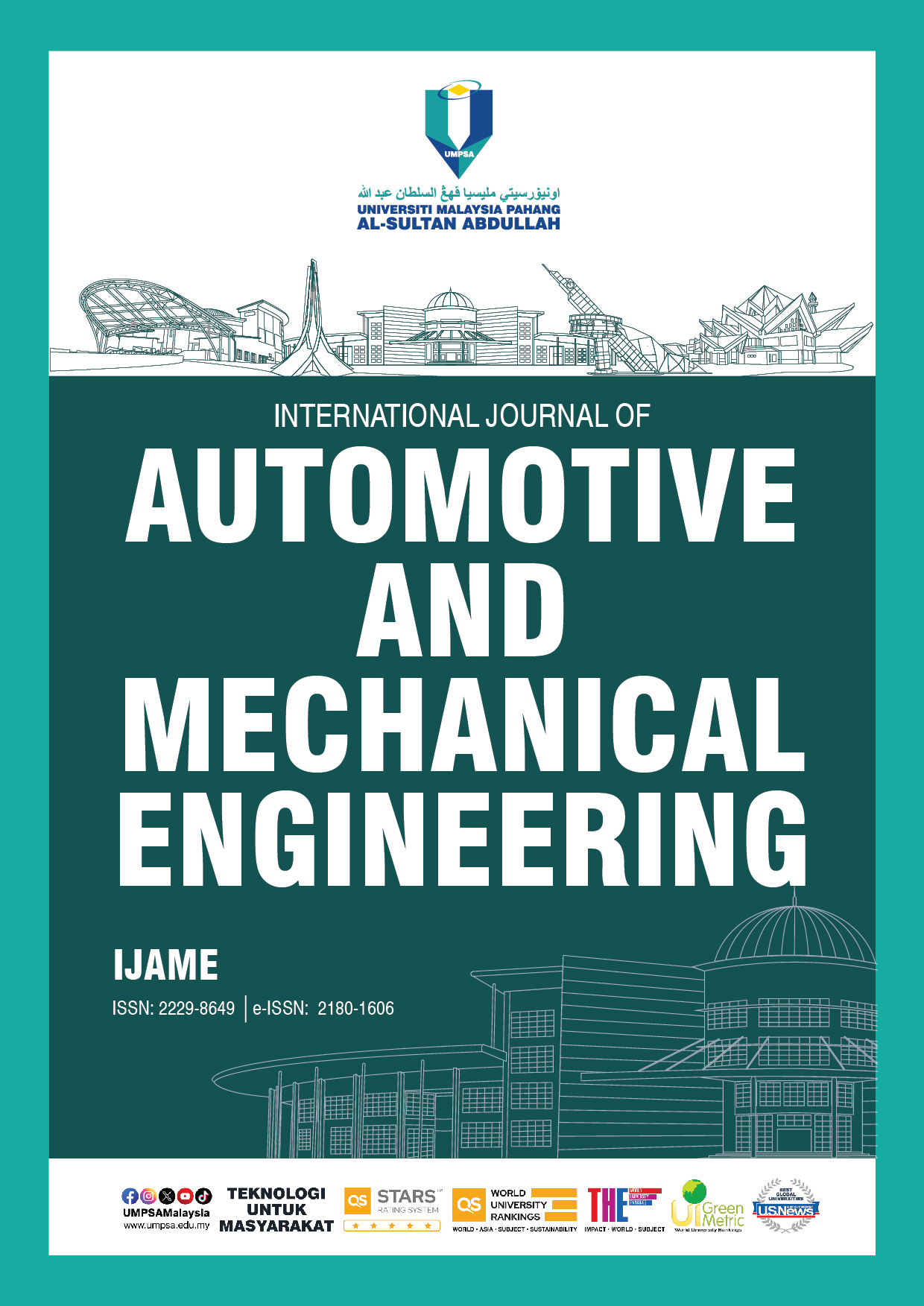Investigation of Static Aeroelastic Analysis and Flutter Characterization of a Slender Straight Wing
DOI:
https://doi.org/10.15282/ijame.21.2.2024.3.0866Keywords:
Aeroelasticity, Divergence, Slender wings, Elasticity, FlutterAbstract
This research aims to investigate the static aeroelastic characteristics of a slender straight 2D wing using aerodynamic strip theory. The finite element method is employed to determine the wing's divergence speed and aileron effectiveness, while Galerkin's method, based on the principle of virtual work is used to obtain the influence coefficient of the straight wing. The application of aerodynamic strip theory and finite span correction is utilized to establish a correlation between elastic twist and lift coefficient. Subsequently, a computational tool in MATLAB is formulated to derive an approximate solution for the static aeroelastic equilibrium equations concerning slender straight wings. An investigation is conducted into the impact of various elastic axis positions on the divergence speed and its implications for structural integrity are analyzed. It was observed in the study that the incorporation of finite span correction into the strip theory led to a 15% augmentation in the divergence speed of the slender wing. Validation of the mathematical model of the slender wing is performed through computational analyses conducted using ANSYS software. The flutter analysis examines parameters such as the distance between the elastic and aerodynamic axes, the sweep position, and the wing span. A MATLAB code is presented in the research article to explore the influence of these parameters on the flutter speed of a slender wing. Through an investigation of the interplay between these parameters and the flutter speed, the study strives to enhance comprehension of the fundamental mechanisms governing flutter occurrence in slender wings. The current research reveals that the flutter speed is notably affected by both the eccentricity and span of the wing. Specifically, a reduction in eccentricity leads to a 1.5% enhancement in flutter speed, while increasing the sweep angle from 15 to 30 degrees for a wing with a 15ft span results in a 2.54% increase in flutter speed. Moreover, wings spanning from 5ft to 15ft exhibit a 5% rise in flutter speed. These findings offer valuable insights for the design of more efficient and stable wings.
Downloads
Published
Issue
Section
License
Copyright (c) 2024 The Author(s)

This work is licensed under a Creative Commons Attribution-NonCommercial 4.0 International License.







